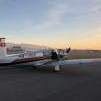M20K stalling tendencies
-
Members Online
- M Terry
- Glen Davis
- TCC
- FoxMike
- NickG
- Mac80
- Marc_B
- cferr59
- CChris
- MattD89
- 0TreeLemur
- Ron McBride
- Griswold
- PT20J
- takair
- StevenL757
- dzeleski
- EKoS
- ericrynehess
- Scottknoll
- OR75
- RescueMunchkin
- Rwsavory
- ELysek1
- 00-Negative
- GeeBee
- EricJ
- Rick Junkin
- Brandt
- Bryan G
- N305EP
- philiplane
- kevinw
- jeff s
- bluehighwayflyer
- joepilotmooney
- AndreiC
- Aviationist
- MikeOH
- Marcopolo


Recommended Posts
Join the conversation
You can post now and register later. If you have an account, sign in now to post with your account.